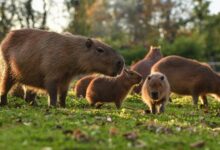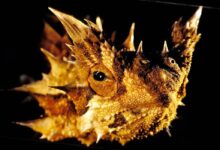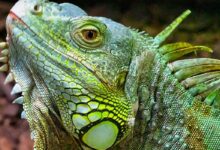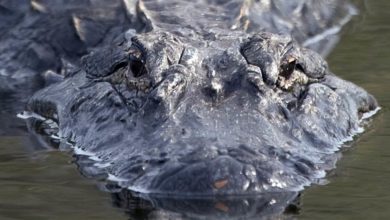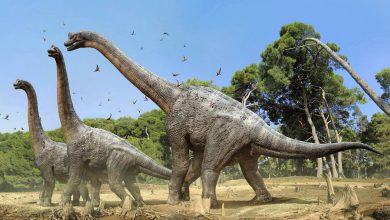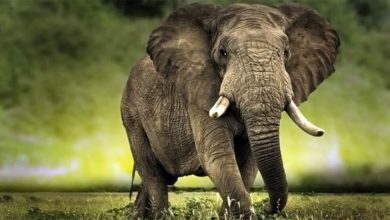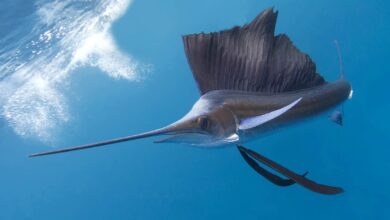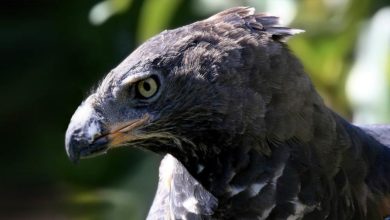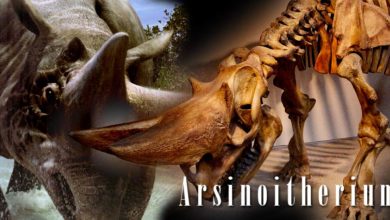Suicidal attack ants (Colobopsis explodens)
When the invaders arrive – and sooner or later this always happens – a small squad of soldiers in the rainforests of Southeast Asia moves in to confront the enemy. As they confront the invaders, the soldiers explode, pelting their enemies with a deadly toxic liquid in a spectacular display of death. In doing so, they repel the enemy’s attack.
The jungle heroes are not ordinary soldiers, but so-called “exploding ants” who protect the colony and its territory by tearing their bodies apart and shooting a viscous stream of poisonous pulp. While it’s no secret that some ants turn into suicide bombers, scientists haven’t cataloged a new species for decades – until now.
Among the countless fascinating plants and animals that inhabit tropical rainforests in Southeast Asia (in Borneo, Thailand, and Malaysia) are the spectacular “exploding ants.” They are a group of brownish-red arboreal ants that belong to the species Colobopsis explodens.
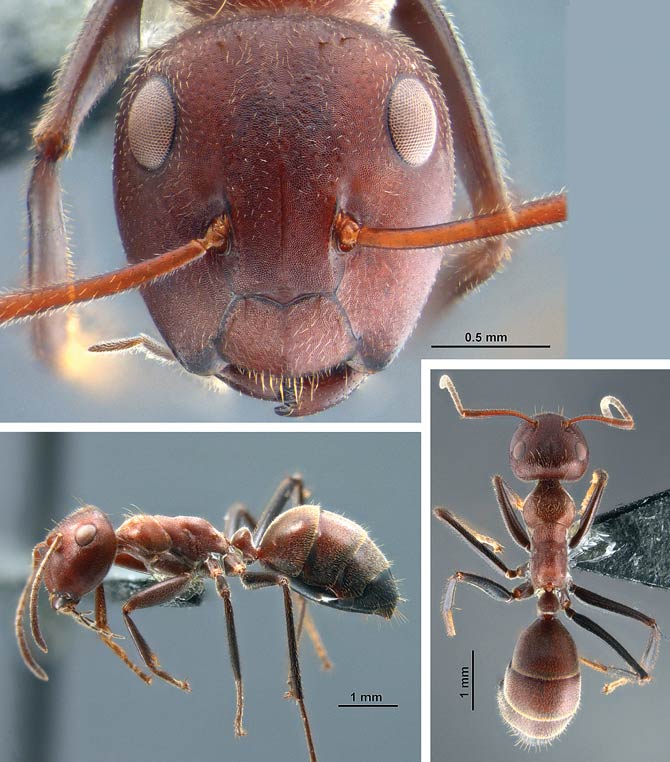
Suicidal altruism or autothysis
The act of sacrificing one’s own life for the greater good is extremely rare in nature. Scientists call it autothysis, or suicidal altruism. The term was first used in 1974 by Eleonora and Ulrich Maschwitz, who described the process taking place in Camponotus saundersi ants.
Exploding ants were first recorded in 1916; however, no new species have been described since 1935 due to insufficient evidence. Instead, entomologists used to simply refer to these ants as members of the Colobopsis cylindrica group.
Ant explosion
The process begins when the insect tightens its muscles around a large glandular sac. The gland eventually swells and bursts like an inflated balloon, releasing a yellow, sticky and poisonous gel that coats unsuspecting enemies.
In addition to ants, some termites and honeybees practice autothysis, providing a last line of defense for nests. Camponotus saundersi ants are unique, however, in that they self-sacrifice away from their nests to defend their territory from intruders.
Territorial defense or division of defensive roles
Not all Colobopsis explodens ants explode. There are “soldier ants” that block the colony nest with their large heads, and smaller “worker” ants that march into battle knowing they will never return.
These ants are infertile, so in an evolutionary sense they are not needed to maintain the species. Sad, isn’t it?
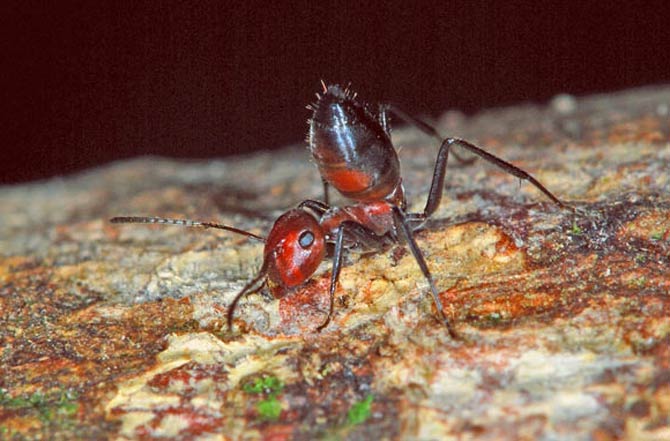
The sacrifice of ants
Ants are capable of amazing pro-social behaviors, such as making bridges and life rafts out of their own bodies, picking up injured comrades from the battlefield, and even administering medical care. But when it comes to self-sacrifice, the “exploding ants” of Southeast Asia who are willing to give up their lives to protect their colony are truly remarkable.
Borg society or superorganisms
Ants are characterized by a kind of collective behavior that could be compared to the Borg from Star Trek. It is a behavior that can only occur among super-social organisms. Unlike individuals in most species, who seek to preserve, reproduce, and pass on their genes, ants and termites act on behalf of the entire colony; the loss of the individual, while not an ideal solution, is secondary to the needs of the collective, which is why ants are called superorganisms.
An exploding ant, of the species Colobopsis explodens, blows up its body, coating the enemy with a sticky, poisonous gel.
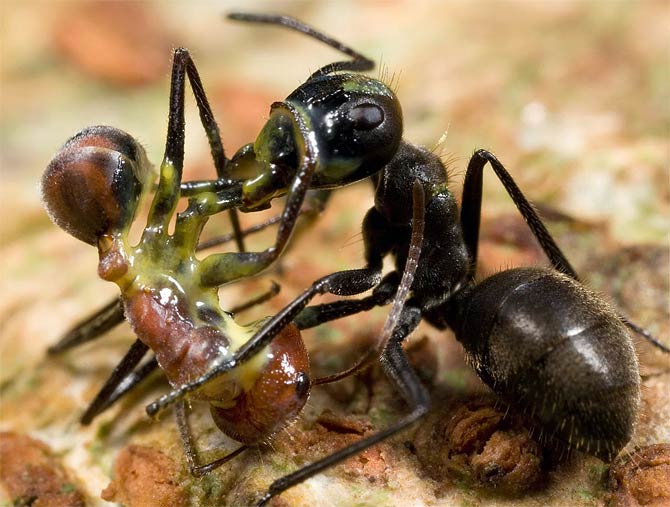
Latest research
Fifteen distinct species of exploding ants have been identified so far, including one that is completely new to science. The new species is actually Colobopsis explodens.
Scientists believe that C. explodens is a model species of exploding ant, meaning that it will now serve as a reference or example for future research. The new species earned this designation because it is particularly prone to self-sacrifice when threatened – workers of this species have blown themselves up when scientists get too close to them.
In addition to documenting the exploding ants’ behavior in detail, the researchers also studied their feeding habits; these insects like to feed on algae, mosses, fungi, dead insects, fruit, and fish.
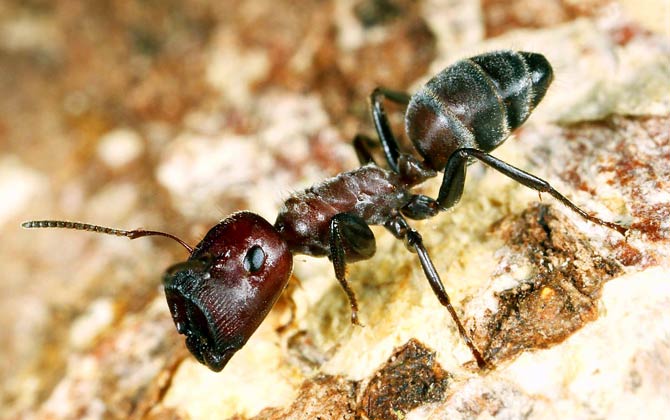
Recommended
- Ants – unusual insects
- The fly and its extraordinary abilities
- Amazing butterfly wings
- Locust anti-collision system
- Fastest animals – Top 100
- Fastest animals – on land, in water and in the air
- Fastest mammals
- Fastest birds
- Most venomous snakes – Top 10
- Largest eagles – Top 10
- Largest birds of prey
- Smartest dogs – Top 10
- Animals records
- Largest crocodiles
- Longest whales
- Heaviest whales
- Longest snakes
- Most venomous snakes
- Largest sharks
- Top-flying birds



